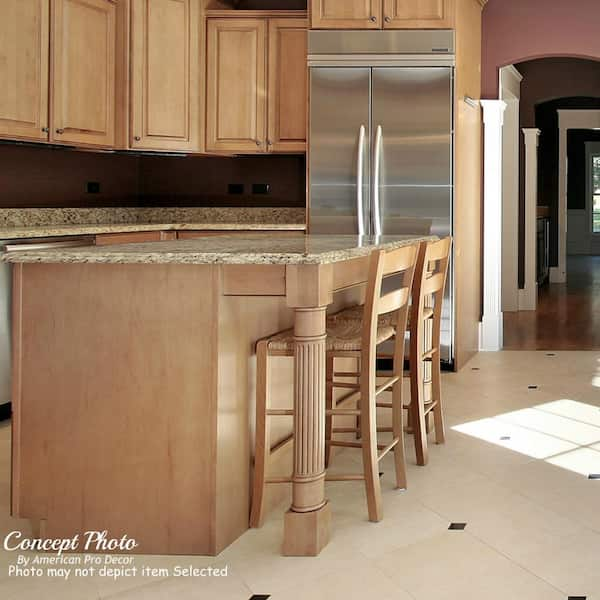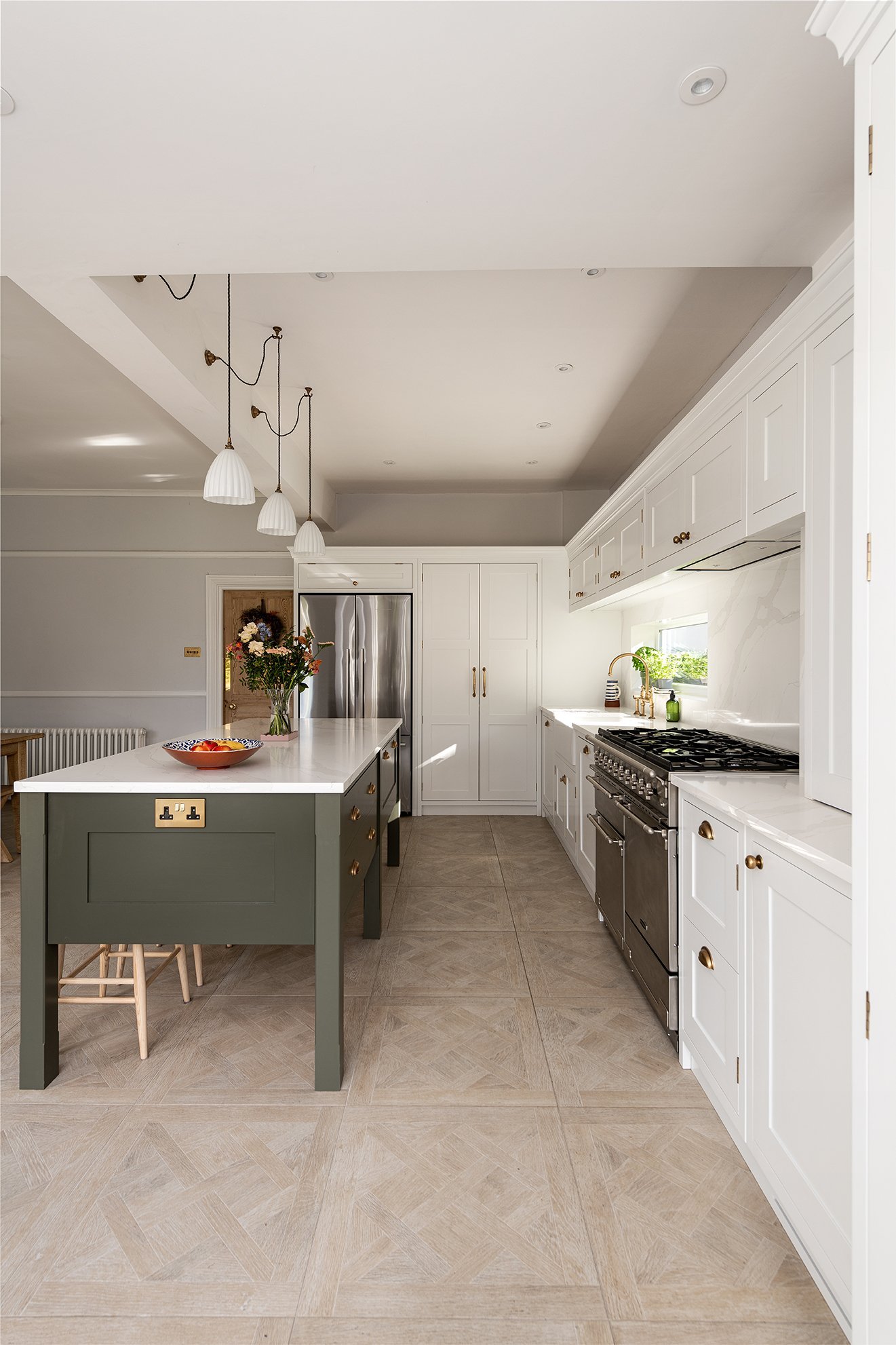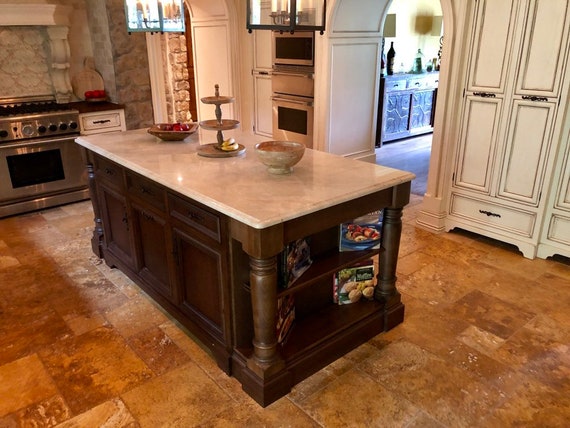Personalized Kitchen Island Legs to Suit Your Kitchen Aesthetic
Personalized Kitchen Island Legs to Suit Your Kitchen Aesthetic
Blog Article
Crucial Tips for Selecting the Perfect Table for Your Kitchen Area
Picking the best dining table for your kitchen is even more than just a matter of preference; it demands an extensive understanding of your area and demands. Begin by measuring your available room to make sure ample clearance for movement. The form of the table plays an essential duty; while rectangular tables match bigger locations, round ones foster affection, and extendable choices use versatility. Product selection is equally vital, with woods offering durability and glass lending a contemporary touch. Finally, the table must balance with your kitchen's aesthetic appeals and fit your family comfortably. What other aspects might influence this essential decision?
Measure Your Room
Picking the ideal eating table begins with a meticulous evaluation of your offered area. This fundamental step ensures that the table not only fits pleasantly within the space however also complements the total design and performance of your dining area.
Take into consideration the flow of motion around the table. It is important to leave appropriate area for chairs to be drawn out and for people to walk around the table without obstruction. A general general rule is to allow a minimum of 36 inches of clearance from the side of the table to the local wall surface or furniture. This makes certain simplicity of access and comfort during dishes.
Additionally, think regarding the number of individuals you generally captivate and whether you require added space for visitors. Selecting an extendable table can give flexibility, enabling you to suit differing numbers of diners. By accurately determining your space, you lay the groundwork for choosing an eating table that boosts both the looks and performance of your eating location.
Pick the Right Forming

On the other hand, round tables are outstanding for smaller kitchens or intimate events, as they advertise discussion by enabling everybody to face each various other. They also provide a feeling of coziness and can fit well in tighter areas due to their absence of sharp corners. Oblong tables supply the very best of both globes, combining the size of rectangle-shaped tables with the affection of round ones, making them versatile for numerous setups.
Square tables are another alternative, specifically suited for square-shaped areas. They produce a modern and balanced appearance, cultivating an equivalent eating experience for all seated.
Product Factors To Consider
When picking an eating table, product considerations are vital in identifying the table's longevity, upkeep needs, and general visual. Timber is a classic choice, using classic charm and toughness. Hardwoods like oak, walnut, and mahogany are especially long lasting, though they can be costly. kitchen island legs. Softwoods, such as pine, are a lot more inexpensive however may be susceptible to scratches and dents.
Glass-topped tables give a contemporary, smooth appearance and can make a room show up bigger due to their openness. Nevertheless, they need constant cleaning to stop finger prints and smudges. Additionally, toughened up glass is recommended for its additional toughness and safety.

Finally, composite materials like MDF (Medium-Density Fiberboard) or plywood are affordable choices. These materials can simulate the appearance of strong wood however might not offer the very same longevity. They are typically simpler to tidy yet can be at risk to water damage otherwise correctly secured.
Ultimately, the selection of product Discover More Here must align with your kitchen area's style, your lifestyle needs, and your budget constraints. (kitchen island legs)
Seats Capability and Comfort
Just how do you establish the right seating capacity and comfort for your table? This vital step involves analyzing both the physical area offered in your kitchen and your family's functional needs. Begin by gauging your kitchen area to guarantee the table fits conveniently, permitting at the very least 36 inches of clearance around it for simple motion. Think about the variety of people who generally eat together, as this will certainly affect the table size. For a family members of four, a rectangular table of 48 inches long or a round table with a 48-inch size is normally enough.
The elevation of the table should preferably be around 30 inches, giving a balanced ergonomic stance for seated diners. Chairs ought to have a seat elevation of 18 to 20 inches to guarantee a comfy eating position.
Design and Appearance
Choosing a dining table that suits your design and looks entails balancing personal preference with the existing decor of your eating room. The eating table is usually the centerpiece of the kitchen area, and its design must match the overall motif of the area. Whether your kitchen boasts a contemporary, minimal look or a rustic, farmhouse appeal, the table you select should harmonize with official website these components to create a cohesive and welcoming ambience.
Take into consideration materials carefully; timber uses a timeless allure and can vary from rich mahogany for a conventional want to lighter oak for a modern feel. Metal and glass tables, on the various other hand, can introduce a streamlined, industrial side to your kitchen. Do not overlook the table's form-- rectangle-shaped tables are functional and timeless, while round and oval choices can cultivate a more intimate dining experience.
Furthermore, pay attention to finishes and details. A troubled coating may include character and warmth, whereas a glossy surface area can add to a tidy, modern visual. Inevitably, your eating table ought to not just healthy effortlessly into your cooking area's style yet likewise reflect your individual style, elevating the space both functionally and visually.
Conclusion
In conclusion, picking the optimal dining table for a cooking area requires careful analysis of area, shape, product, seating capability, and aesthetic consistency. Ultimately, a well-chosen dining table fosters an inviting atmosphere and fits the home conveniently, hence improving the eating experience.

When choosing a dining table, product factors to consider are critical in determining the table's resilience, upkeep demands, and general visual. For a family members of four, a rectangle-shaped table of 48 inches long or a official statement round table with a 48-inch diameter is typically sufficient.
Do not neglect the table's form-- rectangular tables are flexible and timeless, while round and oval options can promote an extra intimate eating experience. kitchen island legs.
Report this page